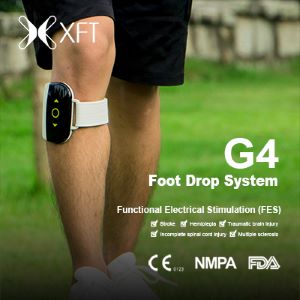Brain Injury
A NIDILRR Traumatic Brain Injury Model Systems Investigation of Home Neighborhood Tree Canopy Coverage after Traumatic Brain Injury
Tuesday, October 31, 2023
3:15 PM - 3:21 PM
Location: Station 11
Research Objectives: Explore the relationship between tree canopy coverage (TCC) and other personal factors in persons with traumatic brain injury (TBI).
Design: Cross-sectional.
Setting: Community.
Participants: Persons with moderate-to-severe TBI with a TBI Model Systems follow-up after January 1, 2017.
Interventions: Not applicable.
Main Outcome Measures: Neighborhood Percent TCC (census tract), depression (Patient Health Questionnaire-9; < 10=none/mild, >10=moderate/severe), anxiety (General Anxiety Disorder-7; < 10=none/mild, >10=moderate/severe), and personal/demographic factors (age, race/ethnicity, sex, injury cause, neighborhood type).
Results: Neighborhood percent TCC differed significantly (p <.001) by neighborhood type (urban/rural/suburban), race/ethnicity, and cause of injury. Urban neighborhoods had the lowest TCC, and rural neighborhoods had the highest. Whites’ neighborhoods had the highest TCC, whereas Hispanics’ neighborhoods had the lowest. Those with TBI from motor vehicle accidents lived in neighborhoods with higher TCC than those with all other causes of injury. After adjusting for sex, race/ethnicity, age, and neighborhood type, a 10% increase in TCC was associated with 1.044x higher odds of moderate/severe depression (p=.047) and 1.047x higher odds of moderate/severe anxiety (p=.057). Men had lower odds than women, those who identified as Black or Hispanic had higher odds (compared to Whites), and being younger was associated with higher odds for both depression and anxiety (p’s <.01).
Conclusions: Percent TCC in one’s home neighborhood differs by personal factors known to affect mental health outcomes after TBI, and may be related to different causes of injury. While the direct effect of TCC on mental health after TBI, after adjusting for these personal factors, was small and in the opposite direction as hypothesized (higher TCC associated with higher depression/anxiety scores), it is important to consider how TCC interacts with these personal factors and other social determinants of health (SDoH) to affect mental health (e.g., effects of TCC may differ based on geographic region, neighborhood type, or cultural values tied to the land and greenspace). Environmental factors like TCC should be included in research on SDoH to provide a comprehensive understanding of health outcomes after TBI.
Author(s) Disclosures: NIDILRR-funded
Design: Cross-sectional.
Setting: Community.
Participants: Persons with moderate-to-severe TBI with a TBI Model Systems follow-up after January 1, 2017.
Interventions: Not applicable.
Main Outcome Measures: Neighborhood Percent TCC (census tract), depression (Patient Health Questionnaire-9; < 10=none/mild, >10=moderate/severe), anxiety (General Anxiety Disorder-7; < 10=none/mild, >10=moderate/severe), and personal/demographic factors (age, race/ethnicity, sex, injury cause, neighborhood type).
Results: Neighborhood percent TCC differed significantly (p <.001) by neighborhood type (urban/rural/suburban), race/ethnicity, and cause of injury. Urban neighborhoods had the lowest TCC, and rural neighborhoods had the highest. Whites’ neighborhoods had the highest TCC, whereas Hispanics’ neighborhoods had the lowest. Those with TBI from motor vehicle accidents lived in neighborhoods with higher TCC than those with all other causes of injury. After adjusting for sex, race/ethnicity, age, and neighborhood type, a 10% increase in TCC was associated with 1.044x higher odds of moderate/severe depression (p=.047) and 1.047x higher odds of moderate/severe anxiety (p=.057). Men had lower odds than women, those who identified as Black or Hispanic had higher odds (compared to Whites), and being younger was associated with higher odds for both depression and anxiety (p’s <.01).
Conclusions: Percent TCC in one’s home neighborhood differs by personal factors known to affect mental health outcomes after TBI, and may be related to different causes of injury. While the direct effect of TCC on mental health after TBI, after adjusting for these personal factors, was small and in the opposite direction as hypothesized (higher TCC associated with higher depression/anxiety scores), it is important to consider how TCC interacts with these personal factors and other social determinants of health (SDoH) to affect mental health (e.g., effects of TCC may differ based on geographic region, neighborhood type, or cultural values tied to the land and greenspace). Environmental factors like TCC should be included in research on SDoH to provide a comprehensive understanding of health outcomes after TBI.
Author(s) Disclosures: NIDILRR-funded

.jpg)
